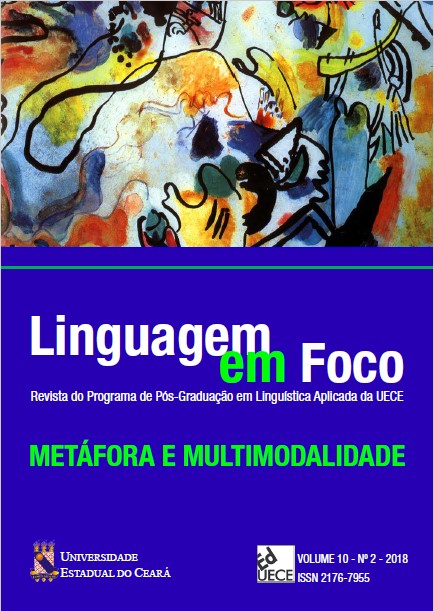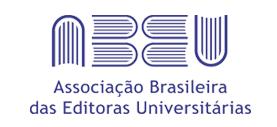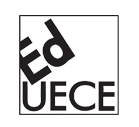METAPHOR AND MULTIMODALITY IN MEANING-MAKING
Keywords:
Blending, Multimodality, Multimodal metaphor, Multimodal concept, AdvertisingAbstract
When talking with people face to face, we usually complement verbal language with gestures, facial expressions and sometimes images and sounds present in the speech scene, which constitutes multimodality. When we write to absent people, we can recover multimodal resources employing what Greeks called “didaskalía”. We, human beings, are the only creatures in the planet able to refer in absence. We can talk about a horse – which lives in a farm – in our living room. In doing so we trigger pre-existing multimodal senses from our addressee’s long-term memory, related to its shape (image), its whinny (hearing), its strength (touch). When we use a metaphor as my cousin is a horse with his girlfriend, we intend to focus mainly on the horse strength, blending this aspect to the way he acts (physically or psychologically) towards his girlfriend. Our aim is, therefore, to discuss multimodal resources for metaphorical meanings, multimodal constructions in advertising discourse and multimodal metaphors of concepts in embodied mental sense simulation. All these assets have the functional objective of framing the way the audience should build in their minds the world we are talking about according to our conscious or subconscious intentions. Language is part of the way we construct the world within our and our addressee´s minds.
Downloads
Downloads
Published
How to Cite
Issue
Section
License
Copyright (c) 2019 Antônio Suárez Abreu, Sarah Barbieri Vieira, Alexandre Bueno Santa Maria

This work is licensed under a Creative Commons Attribution 4.0 International License.
Authors who publish in Linguagem em Foco Scientific Journal agree to the following terms:
- Authors retain the copyright and grant the journal the right of first publication. The articles are simultaneously licensed under the Creative Commons Attribution License which allows sharing the work with an acknowledgement of its authorship and initial publication in this journal.
- The concepts issued in signed articles are the absolute and exclusive responsibility of their authors. Therefore, we request a Statement of Copyright, which must be submitted with the manuscript as a Supplementary Document.
- Authors are authorized to make the version of the text published in Linguagem em Foco Scientific Journal available in institutional repositories or other academic work distribution platforms (ex. ResearchGate, Academia.edu).

























